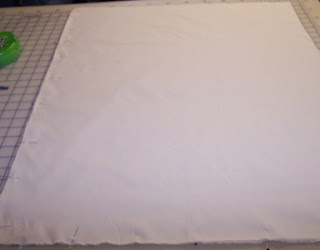of the gray and white striped dress came out just as perfect as the front. I couldn't be more pleased how this project is turning out. This is how the perfection was accomplished.

I had this small quilting ruler which has a bias line and a straight of grain line. I placed the paper pattern piece on the bias of the fabric. I placed the bias mark of the ruler on the straight of grain line of the paper pattern. I then made sure the straight of grain mark on the ruler lined up with a strip on the fabric. I moved the paper pattern around until it was perfect. Everything lined up nicely when it was time to sew the seams up.
I spent some time thinking about a lining for this dress. At first, I wasn't going to add one, but you can see through the fabric. I thought about batiste, but I want something that will slide against the fashion fabric. I will probably choose either china silk or a rayon. I still will have to order whatever I choose. It gets discouraging not to just run to the fabric store.
I did some research on how I should lay out the lining - straight of grain or bias. A good rule is to lay the lining as you did the garment, so bias it is.



































